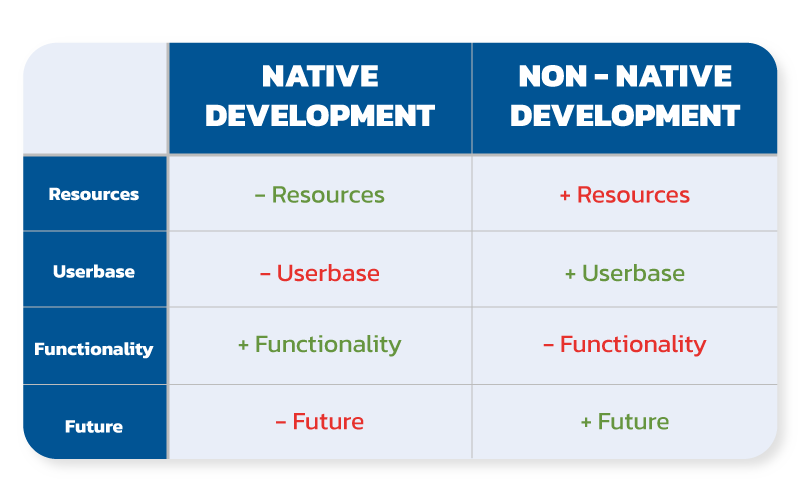
Myths and realities behind creating a good corporate culture for your software development team
Curated by: Sergio A. Martínez
There is a lot of discussion about what makes for a good corporate culture for an organization in the software industry, and while there’s no objective answer to this idea, it’s clear that without a solid culture, a company can’t hope to thrive and truly nurture its employees. And we often forget that this culture doesn’t have to be something complex or expensive – what matters is that everyone understands their roles and pushes each other to do their best work.
What does a good cultural approach look like? Simple things like making sure there are clear paths for communication within the team and offering opportunities for people to get more involved with projects if they feel passionate about them is a good start, for example. Having a strong corporate culture doesn’t have to mean investing in large-scale activities – it takes small steps every day towards building relationships between teammates and creating an environment where everyone can contribute and do their best work.
However, it’s easy to lose sight of what makes a culture truly effective. Many software development organizations believe that a good environment consists entirely of free snacks and coffee, unlimited vacation policies, quirky office decorations, and the like. These perks are nice to have, sure, but they alone will not create a culture; it’s more important to have the right people with the right values in charge, who prioritize collaboration and transparency so teams work together effectively and everyone has access to information they need to make decisions.
After all, the endgame of a comfortable work environment is fostering productivity – providing the correct workspaces (both in the office and remotely), and open communication goes a long way towards creating a pleasant place to write code and solve programming challenges. Ultimately, a good corporate culture that supports software development involves understanding what motivates your team members and showing them their work is respected and valued. This is one of the main reasons why we strive to foster the best culture possible at Scio. So, with that in mind, we want to discuss some of the common myths of building a great culture, what a good approach might look like, and whether or not developing this kind of environment inside a company improves your possibilities of success.
Myth #1: Establishing a set of values is enough.

Today it is pretty much expected for any serious company to be guided by a core set of values that, in theory, represent what the organization is all about. And while having these values is an important step towards building a strong and healthy working culture within a software development company, that, by itself, is not enough. There has to be buy-in among the employees, with these values understood and incorporated into their everyday work.
That’s why it’s so important to build clear communication around them, make sure everyone involved shares the same sensibilities, and regularly celebrate the successes that reflect these values. It’s also vitally important to regularly discuss how they’re being put into action and identify where they may be slipping to rectify any issues quickly. If this isn’t done in earnest then having core values won’t do much for your culture at all; they will become just words on paper that will neither help nor encourage anything among the employees. You have to dedicate time, effort, and energy regularly if you want the benefits of a good culture that those values should bring.
Myth #2: It’s all about the perks
Having cool perks may seem like a great way to attract employees and keep them motivated and engaged, but it shouldn’t be confused with having a good corporate culture. Things like free meals and gym memberships are nice, but ultimately those things don’t do much to improve the environment of your business. To create a strong corporate culture, you have to go beyond material incentives. You need to emphasize collaboration and respect among colleagues; focus on fostering an open exchange of ideas; prioritize employee wellness both physical and mental; create clear standards for accountability; and recognize individual successes. In other words, a truly nurturing workplace is made up of meaningful conversations, opportunities to learn, and a sense of belonging for all staff regardless of their backgrounds.
So, while perks can be part of creating a positive office atmosphere, they shouldn’t be used as a stand-in for a real corporate culture implementation. Good corporate cultures foster creativity and morale, giving employees a platform to express their ideas without feeling like they won’t be listened to or judged unfairly. Companies should remember that the spark of meaningful relationships among staff is much more valuable than offering one-stop solutions like free snacks or ping pong tables.
Myth #3: Culture Is Just Another Management Fad
The talk of good corporate cultures has picked up in the last decade, so it’s easy to brush it aside as the current fad among the Tech sectors. But in reality, it’s a precious resource that helps organizations succeed. Things like team bonding, creating an open and supportive atmosphere and having leaders who listen to feedback are all factors that help convince people to stay on board, work better together, and generate more robust results.
So, with the increased focus on healthy team dynamics over the past few years, many organizations have seen firsthand the rewards of an invested and cohesive corporate culture. Scio, for example, knows that a good culture makes teams more productive, and happier at work, giving them a sense of pride working together – none of which exists in companies that don’t put effort into fostering a positive team environment. So while it may seem like corporate culture is just another trend right now, in reality, it’s become a crucial element of success for software development stories.
Myth #4: HR is the one responsible for a good working culture
In that same sense, taking its internal culture seriously can seem to be the kind of issue that the Human Resources department (HR) exists for, leaving them responsible for designing, implementing, and making sure this culture exists. And while HR often gets credited with essential tasks like hiring, payroll management, and creating employee handbooks, reality can be a tad more complicated than that. HR is an integral part of any successful corporate culture, no doubt about it, but a strong corporate culture is something that everyone should be invested in creating.
Healthy workplace culture can have a real-world impact on employees’ lives, after all – from greater job satisfaction to better performance and higher retention rates, when corporate culture isn’t treated as a sideshow but given the attention it deserves, everybody ultimately benefits. The HR team can bring structure and consistency to challenges of conflict resolution, personnel procedures, setting job expectations, and setting the tone for the values and objectives that employees should strive to embody when in their roles, but they are just one part of this puzzle. Supervisors, leadership teams, and employees all have to play their role in bringing these elements together to create a productive working environment.
Myth #5: It doesn’t impact the bottom line

Sure, a good corporate culture sounds nice to have, but the biggest question behind these kinds of efforts is always the same: will it have a positive impact on our bottom line? Good software development relies on cooperation and clear communication between team members, both of which are made seamless by fostering a positive corporate culture. Teams that have a healthier corporate culture can quickly pick up new processes and identify areas for improvement.
What’s more, employees who feel genuinely valued in their work environment have greater motivation to create the best solutions possible and take ownership of their projects. An excellent corporate culture is also invaluable during times of change or challenge. It allows developers to band together and come up with creative solutions to any obstacles they may encounter while keeping their spirits high. So yes, having a good corporate culture in the workplace is critical for any business that wants success. When employees feel valued, supported, and connected to the company’s mission, they are far more likely to respond with enthusiasm and dedication, which will impact morale throughout the company. Additionally, when customers recognize a company’s commitment to a strong corporate culture, they tend to view them more favorably resulting in more customer loyalty – a win for everyone!
Some final words
Building a good corporate culture is one of the most important and sometimes overlooked aspects of software development. A strong corporate culture helps foster collaboration between teams, provides a clear set of values to adhere to, and ultimately leads to better outcomes. People are the core foundation for any successful enterprise, so creating an atmosphere that allows developers to work together towards a common goal is essential in providing robust solutions.
Good software development, in the end, is a combination of having the right tools, knowledge, and environment available. If any one of these three components is missing, success becomes elusive and the desired outcome might falter. Although having great tools easily accessible and having experts to help with coding issues is important, having a good working environment can be the foundation for achieving a successful project outcome. A positive work environment enables the team to interact and communicate better, sets expectations so everyone knows what’s expected of them, boosts morale and motivation levels among team members, and facilitates problem-solving through brainstorming sessions. In short, creating an environment of support helps the entire team reach their goals faster while still maintaining quality.
The Key Takeaways
- Good company culture is more than just a fad or a tool to entice new developers to join your organization: it’s key to success.
- However, there are plenty of misunderstandings and myths behind the development of a good working culture that need to be dispelled.
- Among them is the idea that a good company culture is just a collection of perks, or that it doesn’t affect a company’s bottom line at all.
- The reality is that making the effort to foster a good culture means that the people within it have a better environment to make projects shine, reach positive outcomes, and all in all positively affect your client.
















